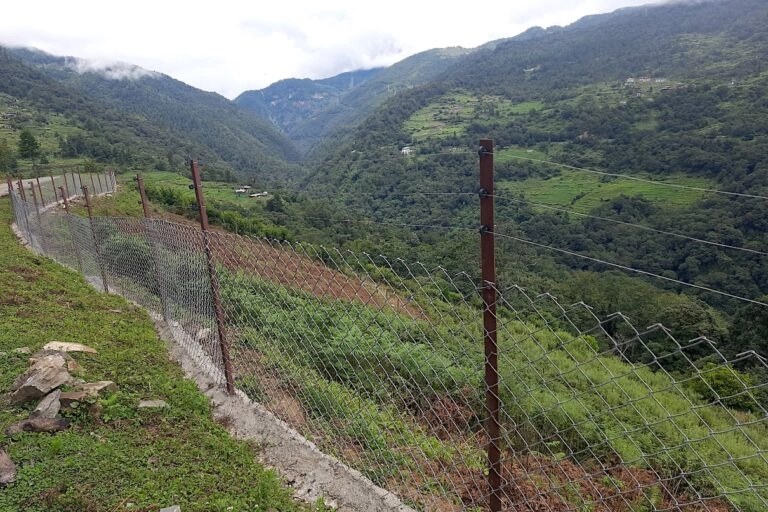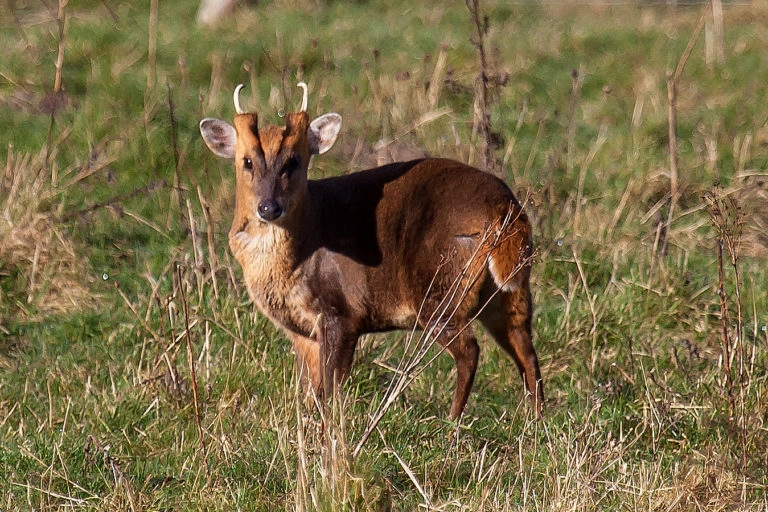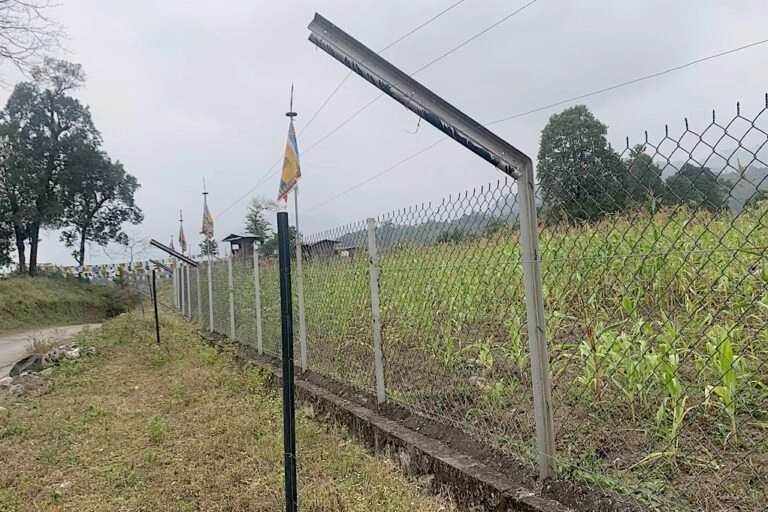- The tiny Himalayan nation of Bhutan is known for embracing nature as part of its philosophy of Gross National Happiness, but this is increasingly at odds with a new drive to boost food self-sufficiency, due to conflict with wildlife like elephants intent upon eating farmers produce.
- The government recently announced an initiative to erect 3,400 kilometers (2,100 miles) of fencing to keep wildlife away from the countrys key crops, but a new commentary argues that this will lessen wildlifes freedom of movement, reducing the effectiveness of migration corridors while shifting conflict with wildlife to unfenced farms.
- Addressing human-wildlife conflict requires more than structural barriers [while] integrated strategies that combine wildlife population management, habitat enrichment, diversified deterrents, insurance mechanisms, and community stewardship offer a sustainable path forward, the author writes.
- This post is a commentary. The views expressed are those of the author, not necessarily of Mongabay.
On July 17, 2025, Royal Manas National Park, Bhutans oldest protected area, posted on its Facebook page: Wild Friends Arent Always Friendly. The message referred to a midnight incident in which elephants damaged several vehicles parked inside a newly constructed parking area secured by a boundary wall, concertina wire fencing, and a thorn-gated entrance.
This event at Manas is not an isolated occurrence. Across Bhutan, such encounters are becoming increasingly frequent, underscoring an urgent need for large-scale intervention. In response, Bhutan is rapidly expanding its chain-link fencing program nationwide to shield farmers and safeguard food systems.
While this infrastructure offers immediate relief and supports agricultural recovery, it also fragments vital wildlife corridors, raising profound ecological and ethical concerns. The urgency to act is clear, yet the long-term consequences challenge Bhutans deep-rooted commitment to coexistence with nature.
 A chain-link fence erected to exclude wildlife from crops in Chanachen village, Chhukha district. Image by Norbu Tshering / Gedu Divisional Forest Office.
A chain-link fence erected to exclude wildlife from crops in Chanachen village, Chhukha district. Image by Norbu Tshering / Gedu Divisional Forest Office.
This urgency stems from a worsening rural crisis. Human-wildlife conflict is not new to Bhutan, but has now reached a critical tipping point. Crop raids by elephants, wild pigs, monkeys and porcupines increasingly force farmers to abandon their fields. Farmland lies fallow not because farmers have given up, but because they can no longer afford to lose another harvest.
As agriculture becomes less viable, rural depopulation intensifies, leading to reduced farm labor and an increase in fallow land. These lands are reclaimed by forests, drawing wild animals closer to settlements, which worsens human-wildlife conflicts and discourages farming. This feedback loop presents a complex challenge with no straightforward solution.
In response to this escalating distress, Bhutan has launched its most ambitious human-wildlife conflict mitigation effort to date: a nationwide fencing program valued at approximately $60 million under the 13th Five-Year Plan (2023-2028). The ultimate goal is to safeguard approximately 45,000 acres (about 18,000 hectares) of farmland by expanding fencing coverage from 87 kilometers to 3,400 kilometers (from 54 to 2,100 miles).
The program began in 2021 with a pilot project in Korphu Gewog (subdistrict), where fencing enclosed 300 acres (112 hectares) of farmland that were left fallow due to persistent crop damage by wild pigs, deer and porcupines. Supported by about $3.5 million in government funding, this marked a strategic departure from earlier electric fencing efforts that suffered rapid deterioration. It demonstrated a strong commitment to protecting agricultural livelihoods through durable fencing solutions.
The rationale is straightforward: protect farms, restore productivity, and ease rural anxieties. Early reports show notable benefits, including reclaimed farmland and reduced reliance on labor-intensive crop guarding. The chain-link fences effectively deter smaller mammals, enhancing food production and advancing Bhutans ambition for agricultural self-sufficiency.
However, this also presents ecological challenges. Bhutans Living Landscape conservation model integrates human settlements and agriculture with protected areas, maintaining wildlife corridors critical for species movement and genetic diversity. But fragmentation caused by fencing risks reducing ecosystem resilience and isolating wildlife populations by halting movement and migration of important herbivores, predators and their prey, like Asian elephants (Elephas maximus), Bengal tigers (Panthera tigris tigris), sambar deer (Rusa unicolor), barking deer (Muntiacus muntjac), Himalayan serows (Capricornis thar) wild boars (Sus scrofa) and other key species.
 A barking deer, or muntjac. Image by Nick Ford via Flickr (CC BY-NC-ND 2.0).
A barking deer, or muntjac. Image by Nick Ford via Flickr (CC BY-NC-ND 2.0).
This conflicts with Bhutans pursuit of balanced environmental, social, and economic well-being, as reflected in its Gross National Happiness (GNH) philosophy. Moreover, fencing only protects enclosed farms, potentially displacing conflicts to unfenced areas rather than resolving them.
Bhutans earlier mitigation efforts included widespread electric fencing that proved inadequate due to poor maintenance and high costs. Complementing such physical barriers, a crop and livestock insurance scheme was piloted in 2016 with the aim to offset wildlife-induced losses, but it struggled with high premiums, inconsistent damage assessments, and low community trust, which limited its adoption. Although efforts to improve insurance mechanisms continue, they remain nascent.
Chain-link fencing delivers tangible short-term benefits, such as reduced crop and livestock losses and farmland restoration. Yet, the potential ecological impacts, long-term maintenance demands, and effects on migratory species require careful evaluation. Experience with electric fencing reveals that most electric fences installed in the early 2010s failed within three years due to poor upkeep and lack of community ownership. Whether chain-link fences will avoid a similar fate remains uncertain. Moreover, larger animals such as elephants have breached or damaged fences, raising concerns about maintenance capacity and long-term sustainability.
Furthermore, social equity concerns are also becoming increasingly prominent. Chain-link fencing support is limited to four major cropping systems: rice, maize, potato and vegetables. Communities cultivating other crops have expressed discontent after being excluded from eligibility due to selection criteria based on crop type. This approach risks deepening regional disparities and merely shifting conflict to unfenced farmland rather than resolving it. It may also discourage cultivation of other crops, an unintended consequence that undermines Bhutans goal for food diversity and self-sufficiency.
 A section of chain-link fence installed in Singye Gewog, Sarpang district of Bhutan. Image by Kesang Wangchuk / Ugyen Wangchuck Institute for Forestry Research and Training.
A section of chain-link fence installed in Singye Gewog, Sarpang district of Bhutan. Image by Kesang Wangchuk / Ugyen Wangchuck Institute for Forestry Research and Training.
A holistic approach to a complex dilemma
Bhutan is at a critical juncture. The rapid expansion of chain-link fencing reflects urgent rural needs, yet it signals a philosophical shift, of moving from coexistence to containment. To uphold its unique GNH values, Bhutan must integrate fencing within an adaptive and holistic management framework that includes scientifically informed wildlife controls, habitat enhancement, diversified deterrents, inclusive insurance schemes, and communities empowered to act as environmental stewards. Without this integration, the fencing initiative risks becoming a temporary and potentially harmful solution.
Bhutans constitutional mandate for conservation and the spiritual significance of wildlife stand in stark contrast to the physical barriers now dividing people from nature and blocking ancient migratory routes. More fundamentally, fencing symbolizes a departure from Bhutans model of coexistence with nature toward separation. The question remains: Are fences protecting Bhutans farmers, or are they fencing out the very future that has made Bhutan distinctive?
Addressing human-wildlife conflict requires more than structural barriers. Bhutans future depends on embracing innovative, evidence-based solutions that honor its cultural heritage, ecological richness, and community aspirations. Integrated strategies that combine wildlife population management, habitat enrichment, diversified deterrents, insurance mechanisms, and community stewardship offer a sustainable path forward.
By adopting such a holistic approach, Bhutan can remain a global exemplar of sustainable coexistence between humanity and the natural world. Yet the question persists: Has Bhutans international recognition for conservation come at the expense of its food production and farming livelihoods? This complex dilemma continues to defy easy answers and demands ongoing, inclusive dialogue balancing conservation and human well-being.
Sangay Wangchuk is an environmental scientist specializing in human-wildlife conflict, sustainable rural development, and conservation policy, and currently leads social impact assessments and community engagement initiatives for renewable energy and conservation projects in New South Wales, Australia.
Related audio from Mongabays podcast: Tibetan author Tsering Yangzom Lama discusses how narratives about humans and nature can be flipped toward improving conservation programs and environmental policy, listen here:
See related coverage:
In Bhutan, a smoked fish tradition helps sustain a vanishing ethnic group
Ecotourism offers new hopes for Bhutanese youth and local environments




